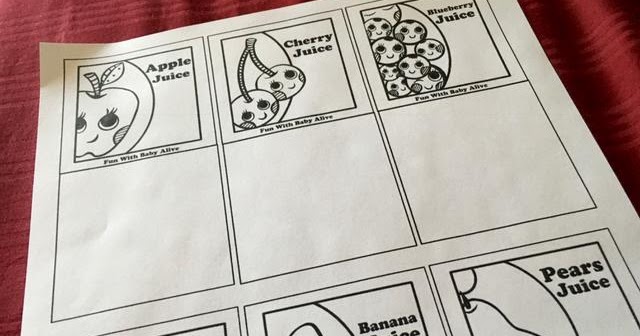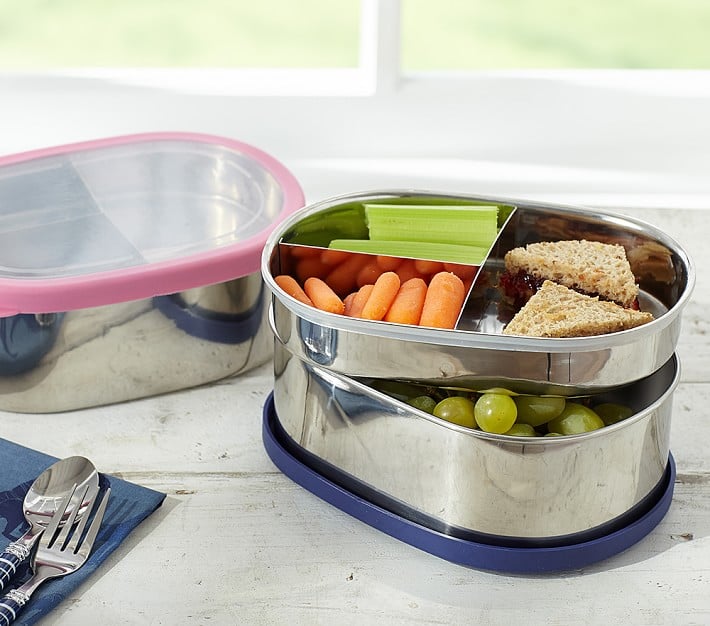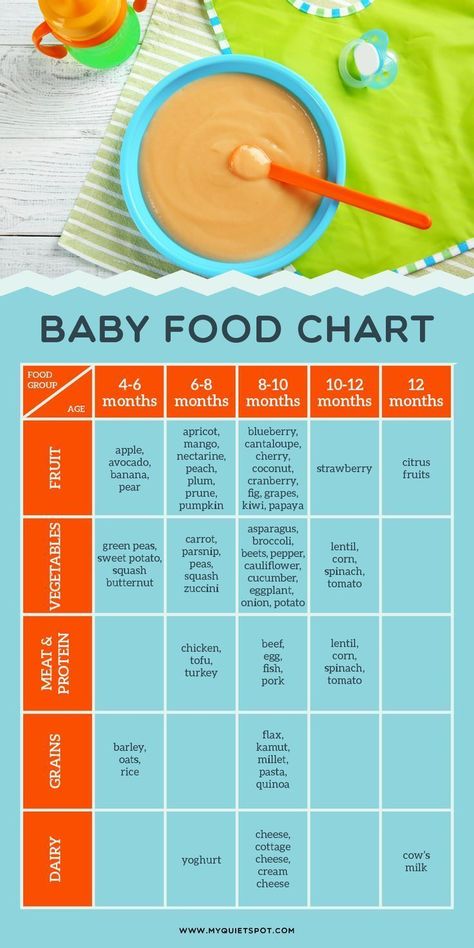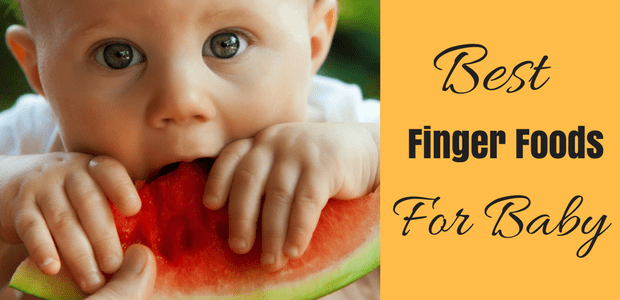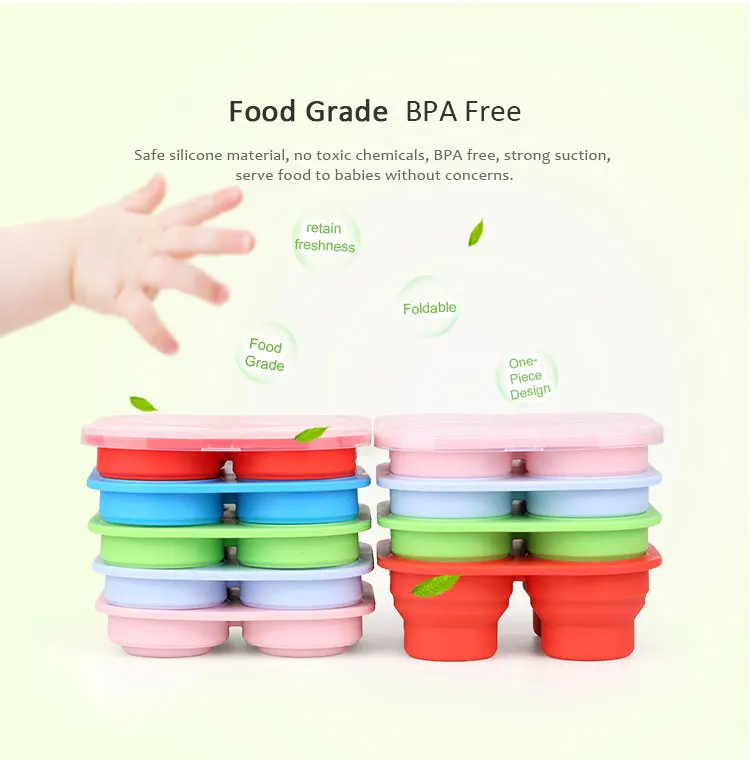How long do you feed baby rice cereal
When Can You Start Feeding Your Baby Rice Cereal
Adding solid foods to your baby’s diet is a big milestone, and you may be wondering when to begin the process and what foods to start with. In the past, single grain infant cereals have been the traditional first choice when transitioning to solid foods, with rice cereal being one of the more popular ones. These days, though it is still OK to start with cereal, experts say that there is no evidence that introducing foods in a certain order provides any advantage for your baby (though babies do tend to like cereal).
Keep in mind that experts highly recommend giving rice cereal as part of a mixed diet of single ingredient choices, rather than as an exclusive food.
Find out how to safely give rice cereal to your baby, and what other infant cereals you might want to give instead.
What Is Rice Cereal?
Rice cereal for babies has been a traditional first food for infants who are being introduced to eating solids. The most common type is a dry powdered cereal, to which liquid is added to form an oatmeal-like consistency, but it can also be purchased premixed. It's one of the single grain cereals that have been recommended for infants when they start on solid foods.
Is Rice Cereal Safe for Your Baby to Eat?
It’s OK to include rice cereal in your baby’s diet as long as you’re not exclusively feeding your baby rice cereal.
The reason experts recommend rice cereal be limited is because of the naturally occurring levels of inorganic arsenic in rice (in this case inorganic refers to the arsenic’s specific chemical compound bound with carbon).
As rice is grown, the plant absorbs more inorganic arsenic from its environment compared to other crops. Arsenic is a naturally occurring element that can enter the food supply through water, soil, or air.
When body weight is considered, a baby’s intake of inorganic arsenic through rice cereal could be three times more than an adult’s. Eating too much rice cereal as an infant can cause long-term health problems.
Eating too much rice cereal as an infant can cause long-term health problems.
What Infant Cereals Can You Give Your Baby Instead of Rice Cereal?
Instead of rice cereal, you can offer another single grain infant cereal such as oat or barley cereal. You can find many of these infant cereals in premixed or dry versions to which you would add breast milk, formula, or water to create a consistency that your baby will like.
Look for cereals that are specifically made for babies because they will be fortified with nutrients like iron and zinc that your baby needs.
Just remember that when introducing new foods — including different types of infant cereals — do so gradually, offering one new food at a time, and then waiting a couple of days before adding another food, to watch for any possible allergic reactions. Once your baby has become accustomed to eating solids, feel free to offer a variety of single ingredient, soft foods.
How Many Times a Day Should You Feed Your Baby Infant Cereal?
When your little one is just starting on solids, spoon-feed your baby a small amount of infant cereal once or twice a day, ideally just after he’s been bottle-fed or breastfed. Start with one or two teaspoons of cereal so that your baby can get accustomed to this new food.
Eventually you can introduce other foods one at a time—and you can even make your baby’s food at home.
Are Other Rice Products Safe to Give Your Baby?
Not necessarily. You can give rice to your older baby as part of a varied and balanced diet. However, it’s best to avoid certain rice-based products like rice syrup, often used as a sweetener in processed foods, as well as rice milk, which should not be used as a substitute for cow's milk.
If your child has turned 1 and is sensitive or allergic to cow’s milk, your healthcare provider will be able to recommend milk alternatives if needed, and can also weigh in on any rice products you’re considering giving.
At What Age Should You Start Feeding Your Baby Infant Cereals?
For most babies, 6 months is a good age to start to introduce solid foods, which can include infant cereals. Breast milk or formula will continue to provide most of your baby's nutrition for the first 12 months.
Waiting until this age is important because by this point your baby would have outgrown a natural reflex that all babies are born with that causes them to push their tongue against anything inserted into their mouths. Most babies grow out of this tongue thrust reflex between 4 and 5 months.
Can You Give a Baby Younger Than 6 Months Infant Cereals?
Most babies are not ready for solid foods, including infant cereals, until they are about 6 months old, though some babies could be ready a month or two earlier. Experts recommend that babies be breastfed or bottle-fed (with expressed breast milk or formula until 6 months of age.
How Do You Prepare Dry Infant Cereal for Your Baby?
If you’re using dry cereal, mix one tablespoon of dry cereal with four tablespoons of breast milk, formula, or water; or follow the recommended directions on the container.
Be sure not serve the cereal from a bottle for reasons we mention in the next section. Gradually, you can add less liquid to the dry cereal to find a thickness your baby likes.
Can You Feed Your Baby Cereal in a Bottle?
Although this might be a practice you’ve heard of, don't feed your baby cereal in a bottle unless your baby’s healthcare provider says otherwise. Feeding your baby through a bottle can lead to unnecessary calories—she may consume more food than she actually needs.
Although rice cereal may have been a popular choice, experts now say there are other infant cereals and first foods that may be safer for your baby. If you’re ever unsure about which infant cereal to give, or need advice about expanding your baby's menu, reach out to your baby’s healthcare provider for advice.
If you’re ever unsure about which infant cereal to give, or need advice about expanding your baby's menu, reach out to your baby’s healthcare provider for advice.
As your baby transitions to solid foods, you deserve lots of rewards for all those diaper changes. Download the Pampers Club app to get rewards for all your Pampers purchases.
How we wrote this article The information in this article is based on the expert advice found in trusted medical and government sources, such as the American Academy of Pediatrics and the American College of Obstetricians and Gynecologists. You can find a full list of sources used for this article below. The content on this page should not replace professional medical advice. Always consult medical professionals for full diagnosis and treatment.
When Can You Start Feeding a Baby Rice Cereal? Safety and More
If you ask for advice on the best time to start feeding your baby rice cereal, the responses may be all over the place.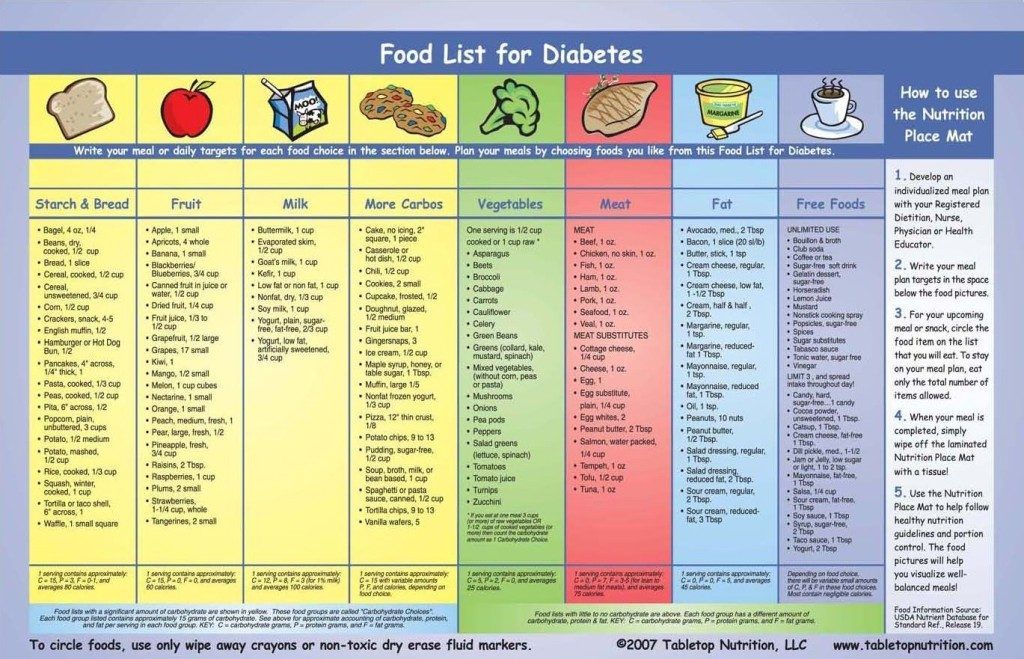 Some people might suggest feeding a baby rice cereal starting at 6 months, whereas others might suggest as young as only 2 or 3 months old.
Some people might suggest feeding a baby rice cereal starting at 6 months, whereas others might suggest as young as only 2 or 3 months old.
But just because someone else gives their baby rice cereal early doesn’t mean that you should do the same. For advice, the best place to go is to your own pediatrician — they’re the authority on your baby’s health. In the meantime, here’s what other experts recommend.
Updated recommendations
New guidelines caution that rice cereal shouldn’t be the only solid given. So the old practice of starting only iron-fortified rice cereal at about 6 months is no longer recommended.
For the first few months of life, you’ll feed your baby exclusively with breast milk or formula. Anything other than breast milk or formula is considered a solid food. So when deciding the right time to start your baby on rice cereal, you should follow the same guidelines for starting a baby on solid foods.
Some people argue that rice cereal is an exception to the guidelines — perhaps because of the ability of rice cereal to dissolve in (and “thicken”) breast milk or formula when added in small quantities.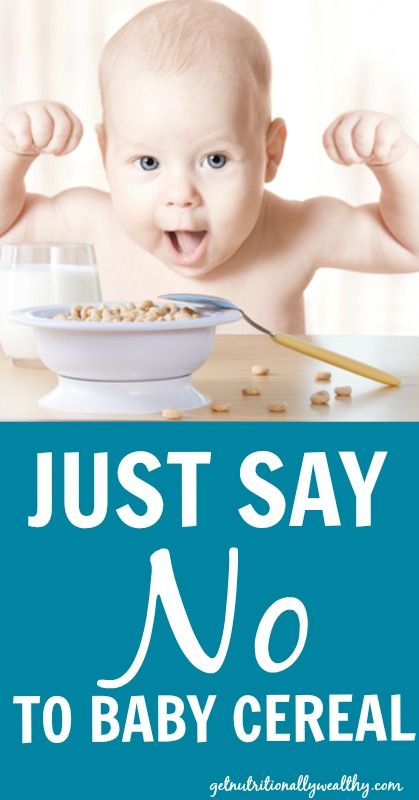
Yet, rice cereal is a solid food. Babies aren’t ready for solid foods until they’re about 6 months old.
Since every baby is different, it’s important to look for signs that your baby is actually ready to start eating rice cereal before serving it.
You should hold off feeding a baby solid food until they have control of their neck and head. Your little one will need to be upright while eating, so they should be able to sit in a highchair.
Most importantly, don’t give a baby rice cereal until they have the oral skills to move solid food from the front of their mouth to the back. This skill doesn’t typically develop until at least 4 months old. Until then, your baby’s tongue will push out any food that enters their mouth.
Another telltale sign that your baby may be ready for solid food is when they express an interest in your food. If you’re eating in their presence, they might try to grab your food — or lean in toward food with their open mouth (have your camera ready!).
For the most part, you shouldn’t give a baby rice cereal before the recommended guidelines. Even though the extrusion reflex — that automatic reflex that causes a baby’s tongue to push food forward — can provide some protection before they’re ready, offering solid food too early can still pose a choking or aspiration risk.
Giving a baby rice cereal — or other solid foods — too early may also increase a baby’s risk of having obesity.
But when they’re ready, rice cereal can be a great starter food, among others.
After several months of only consuming breast milk or formula, some babies have difficulty adjusting to solid foods.
To start the introduction process, mix 1 to 2 tablespoons of iron-fortified rice cereal with 4 to 6 tablespoons of formula, breast milk, or water. Some people mix rice cereal with fruit juice, too. But this isn’t recommended because fruit juice doesn’t offer health benefits and is very high in sugar.
Spoon feed an iron-fortified rice cereal to your baby. (It’s important that babies get enough iron once they start solid foods.) But don’t be surprised if it takes a couple of feedings for your baby to get the hang of eating this way. You can nurse or bottle feed first, and then end feedings with rice cereal.
(It’s important that babies get enough iron once they start solid foods.) But don’t be surprised if it takes a couple of feedings for your baby to get the hang of eating this way. You can nurse or bottle feed first, and then end feedings with rice cereal.
Doctors used to recommend rice cereal as a “first food.” But now we know that age-appropriate foods can be introduced in any order, and rice cereal shouldn’t be the only solid given for very long due to arsenic exposure, according to the Food and Drug Administration.
You can introduce other jar or puréed foods like fruits and vegetables before or after you introduce rice cereal. And do include other iron-fortified, single-grain cereals besides rice. Variety is the spice of life — even for baby!
When introducing new solid foods to your baby, do so one at a time. This way, you can detect any potential food allergies or sensitivities early. For example, after you feed your baby peas for the first time, wait 3 to 5 days before introducing carrots.![]()
You might have heard of adding rice cereal to a bottle to thicken breast milk or formula. This, however, isn’t recommended unless your pediatrician says it’s OK.
If your baby has episodes of acid reflux, your doctor might advise this method to thicken the milk and try to prevent regurgitation. But this is rare.
Starting a baby on solid food is a major milestone, but you shouldn’t introduce rice cereal too early. Doing so poses a few different risks. So wait until your baby is about 6 months, and look specifically for signs that they’re ready for solids.
When in doubt, talk it out — with your pediatrician. They’re a goldmine of information, and best of all, they know your baby’s health better than anyone else, including Dr. Google.
Porridge for children: is it possible to give porridge to children and from what age? Recipes with water and milk
Everyone knows about the benefits of cereals for a growing organism. It is cereals for children that are one of the first complementary foods and food during illnesses and during periods of rehabilitation. They are nutritious, contain a large number of essential microelements, are well absorbed, and promote digestion.
They are nutritious, contain a large number of essential microelements, are well absorbed, and promote digestion.
However, the usefulness factor of the dish depends on the preparation method . For example, buckwheat porridge is a storehouse of iron. Children who consume it frequently are less likely to become anemic. But if you cook buckwheat porridge in milk (as many do), then the benefits of this cereal are minimized. The thing is that calcium from milk prevents the absorption of iron from buckwheat. nine0003
Not everything is so simple with semolina. Modern nutritionists have proven its uselessness for healthy children. In addition to the usual carbohydrates that give a feeling of satiety, there is nothing useful for the child in it. However, it is still quite popular.
So, let's figure out which cereals are the most useful for children, how to cook porridge from them and when to introduce the dish into the diet.
Contents:
- Is it possible to give porridge to children and from what age?
- Benefits of porridge for children nine0014
- What kind of porridge should I give my child? Which are the most useful?
- With milk or water?
- A few tips for cooking porridge
- Preparation examples
Is it possible to give porridge to children and from what age?
WHO recommends introducing complementary foods at 4–6 months of age. During this period, the baby's activity increases, he gains weight, and breast milk or formula may no longer be enough. The enzyme system of the gastrointestinal tract is ready to start taking adult food. Delayed introduction of complementary foods can lead to beriberi and developmental delay. nine0003
During this period, the baby's activity increases, he gains weight, and breast milk or formula may no longer be enough. The enzyme system of the gastrointestinal tract is ready to start taking adult food. Delayed introduction of complementary foods can lead to beriberi and developmental delay. nine0003
The scheme for introducing cereals into the diet of a child under one year old is as follows:
6-7 months
The first cereals should be introduced 3-4 weeks after getting used to vegetables. But if the child does not eat up, is not gaining weight well, there are problems with the gastrointestinal tract or a tendency to “liquid” stools, then the pediatrician may prescribe porridge as the first complementary food.
The first cereals should be dairy-free, gluten-free (rice, buckwheat, corn) and monocomponent. Also, the first porridges are cooked without the use of salt, sugar, honey, dried fruits, etc. It is not recommended to cook porridges for children under the first year of life on whole cow's milk.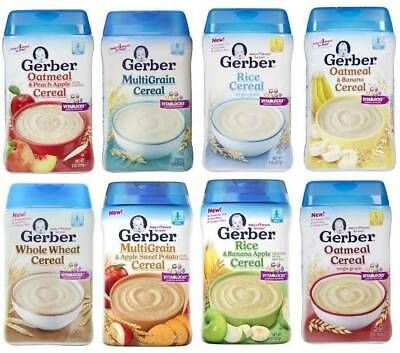 nine0003
nine0003
7-8 months
You can add oatmeal to your diet. Already familiar cereals to try to combine. But only if the child's body is used to them. Porridges can be diluted with additives, such as applesauce.
9-10 months
Introduce barley and wheat groats.
12 months
From this age, you can start cooking porridge with whole cow's milk. But provided that the child is not allergic to it . You can also start giving semolina. nine0003
The benefits of porridge for children
Cereal products contain a large amount of carbohydrates, vitamins (group B, iron, zinc, copper, PP, etc.), minerals and vegetable proteins. Cereals are a great source of energy that kids of all ages need so much, especially schoolchildren.
Cereals improve the functioning of the gastrointestinal tract and can help with disorders. So, buckwheat and oatmeal help with constipation, and rice - with diarrhea. The fiber found in cereals helps to remove unnecessary substances from the body, normalizes metabolic processes in the body. nine0003
nine0003
What kind of porridge should I give my child? Which are the most useful?
Prostock-studio/Shutterstock.com
According to the results of numerous studies, the TOP-7 healthy cereals for children were determined: and stimulates the digestive tract. But remember that by cooking cereals in milk, we deprive it of its beneficial properties.
Oatmeal
The benefits of oats are legendary. Even in the old days, seriously ill patients were raised to their feet with decoctions from this amazing cereal and drank the water in which it was boiled to prevent many diseases. nine0003
Oatmeal is rich in vitamins B, C, E, fiber. However, it should be understood that instant cereals on the principle of “filled and ready” are of little use. After the processing that they have undergone, and in the presence of flavorings, such cereals are harmful to children. Healthy oatmeal is a porridge cooked from whole grains or flakes, the cooking time of which starts from 3 minutes.
Barley porridge
Prostock-studio/Shutterstock.com
Barley porridge. Barley contains iron, phosphorus, potassium, magnesium, vitamins of group B, PP, D, A, E, zinc, boron, silicon, fluorine. This cereal is very useful for brain activity and restoring metabolism. But its disadvantage is the duration of preparation. Do not be tempted by store offers and buy instant porridge. It will be of little use. nine0003
Millet porridge
This cereal contains iodine, iron, chromium, magnesium and other useful substances. Millet is recommended for children with anemia. It improves the functioning of the gastrointestinal tract, helps to accelerate the process of hematopoiesis, helps to remove antibiotics from the body.
Corn porridge (maize)
Prostock-studio/Shutterstock.com
Due to its vitamin and mineral composition, it is indicated for children with bad teeth. Strengthens bone tissue and immunity, normalizes the functioning of the cardiovascular system. Also, corn stimulates a decrease in the level of fermentation and decay of food residues in the intestines. nine0003
Also, corn stimulates a decrease in the level of fermentation and decay of food residues in the intestines. nine0003
Rice porridge
The benefits of the dish will depend on the type of grain and how it is processed. The most useful type of rice is brown, not polished. Rice is rich in potassium and phosphorus. With 7 amino acids, rice is an excellent source of energy. Rice porridge improves the functioning of the gastrointestinal tract, removes toxins from the body, and helps strengthen the cardiovascular system.
Flaxseed porridge
Originally a Russian dish, this amazing porridge is a source of omega-3 and omega-6. Flaxseeds contain three times more of these fatty acids than fish. It is also distinguished by a high protein content - 34 g of protein per 100 g of porridge. nine0003
Milk or water?
Prostock-studio/Shutterstock.com
For children older than a year, it will be more useful to cook porridge with milk, as the fats in it contribute to a better absorption of vitamins from porridge.
Milk porridge is more nutritious and high in calories, it is an additional source of calcium, which is very important for the development of the child's skeleton and teeth.
But when adding milk, you need to take into account several nuances:
- cereals rich in iron will lose their superpower in the prevention and treatment of anemia; nine0016
- when preparing cereals for children under one year old, it is not recommended to use whole cow's milk;
- when preparing milk porridge, you need to be sure that the child's body absorbs this product, he is not allergic to lactose;
- milk is added after or at the end of cooking, otherwise it becomes unhealthy.
If you are allergic to lactose, milk can be replaced with a lactose-free formula, milk from plant ingredients (oatmeal, almond, rice, for example). nine0003
How to cook porridge for a child: recipes and instructions
Prostock-studio/Shutterstock.com
Cereals must be free of husks and other debris. You need to cook well-washed cereals, since in warehouses it is often processed from rodents.
You need to cook well-washed cereals, since in warehouses it is often processed from rodents.
It is advisable to use a pan with a thick bottom for cooking porridge. This will prevent it from burning.
If porridge is prepared for babies, then the cereal can be pre-grinded with a blender or coffee grinder. So the porridge will boil faster and will have a uniform consistency. nine0003
A few tips for cooking porridge
Prostock-studio/Shutterstock.com
Viscous porridge
To cook a viscous porridge, it must be prepared from crushed cereals and added to boiling water. To prepare a viscous porridge, you need to take 1.5–2 times more water than cereals.
Loose porridge
To obtain loose porridge from buckwheat, pearl barley or millet, cereals and water are taken in a ratio of ½, respectively. Groats are added to boiling water and boiled until water is absorbed. You don't need to stir the porridge. nine0003
How to speed up the process?
To make the porridge cook faster, it is pre-soaked. Buckwheat is soaked in cold water 3-4 hours before cooking. It will be possible to have time to cook porridge for children from millet or oats for breakfast if you soak the cereal in hot water overnight. In the morning, swollen porridge will cook very quickly.
Buckwheat is soaked in cold water 3-4 hours before cooking. It will be possible to have time to cook porridge for children from millet or oats for breakfast if you soak the cereal in hot water overnight. In the morning, swollen porridge will cook very quickly.
Cooking examples
Prostock-studio/Shutterstock.com
The food examples below are common for adults and children.
When preparing porridge for a child under one year old, one should take into account the recommendations of pediatricians and do not add spices and cow's milk. Cow's milk can be substituted for breast milk, goat's milk, vegetable milk, powdered infant formula, water, etc. and ease of preparation. You can use semolina porridge not only in its pure form, but also use it for making desserts and creams. nine0003
Ingredients:
- 200 ml milk;
- 1 pinch of salt;
- 1 tsp Sahara;
- 1 st. l. semolina with a slide;
- berries, jam, egg yolk, butter to taste.
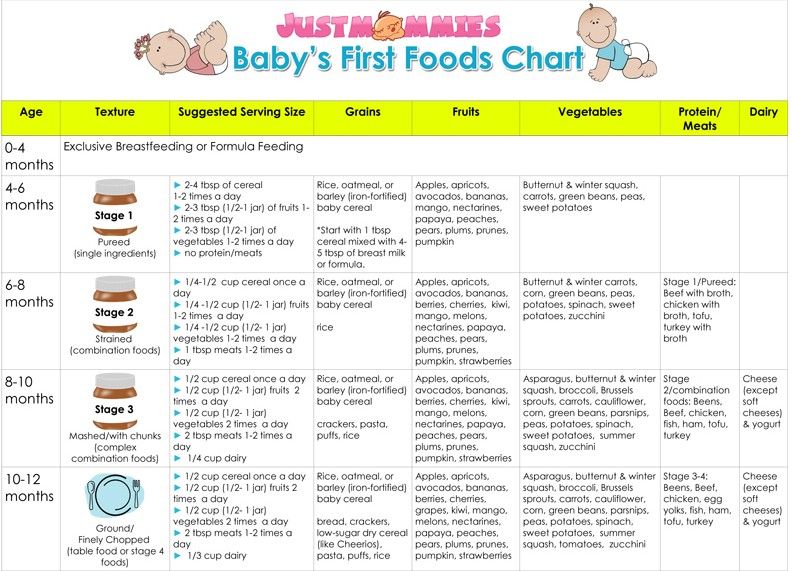
Cooking method:
- When the milk boils, add salt and sugar.
- Stirring constantly, add semolina. It is important to pour the cereal in very small portions. Then there will be no lumps.
- Do not stop stirring until the cereal is completely swollen, usually this process lasts no more than 5 minutes. nine0016
- Add oil and mix well.
- To make semolina fluffy, you can beat it with a blender, so it will become like a cream.
- Ready porridge can be diluted with fillers to taste.
Baby rice porridge
Prostock-studio/Shutterstock.com
If you and your child don't like rice porridge, you can make crumbly rice with this recipe.
What you need:
- 1 st. rice
- 1 st. water;
- oil and spices to taste;
Recipe:
- To make rice fluffy, put it in cold water.
- Under the lid and over high heat, rice porridge is brought to a boil.

- After that, the fire is reduced to medium, and the porridge is cooked for another 10 minutes.
- After this time, the fire is set to minimum, and the porridge is cooked for about 5 minutes.
- The saucepan is removed from the heat. nine0016
- Pot lid replaces with a cloth towel.
After that, rice porridge will need to stand for another 10 minutes.
Buckwheat porridge for children
Prostock-studio/Shutterstock.com
Grains can be ground in a coffee grinder and boiled for 15 minutes. Such a porridge will turn out liquid and it will be convenient to use it from a bottle. If it turned out a little thick, it doesn't matter. The porridge can be diluted with breast milk or prepared formula.
For an older child and schoolchildren, you can cook buckwheat with cheese, because everyone loves it. This dish is perfect for both breakfast and dinner. nine0003
Ingredients :
- 200 gr. buckwheat;
- 500 ml water;
- 50 g hard cheese;
- 30 g oil;
- 1 pinch of salt.

Cooking method:
- Boil buckwheat in salted water until tender. The process usually takes 15-20 minutes.
- While buckwheat is cooking, three large cheese.
- Add butter, cheese to the finished porridge and stir quickly.
The dish is served hot so that the cheese stretches. You can decorate with greenery if the child likes. nine0003
Corn porridge
Prostock-studio/Shutterstock.com
Corn porridge is perfect for both babies and older children. It's filling, healthy, and gluten-free. You can cook with both milk and water.
Very tasty when combined with pumpkin.
Ingredients :
- 200 g pumpkin pulp;
- 100 g grits;
- 250 ml milk;
- 25 g oil;
- steamed dried fruits, jam, honey to taste. nine0016
Cooking method:
- Pour boiling water over grits and leave to swell.
- While the corn grits swell, cut the pumpkin pulp into small slices and simmer with sugar.

- Pour grits into boiling milk and cook for 15 minutes on minimum heat, stirring constantly.
- A few minutes before cooking, add butter and pumpkin.
- If desired, add honey, steamed dried fruits, etc. nine0211
- 130 g pulp; nine0016
- 200 ml milk;
- 200 ml. water;
- 0.5 st. cereals;
- oil and spices to taste.
- Cut pumpkin into cubes.
- Place the grits and pumpkin in a saucepan and cover with hot water.
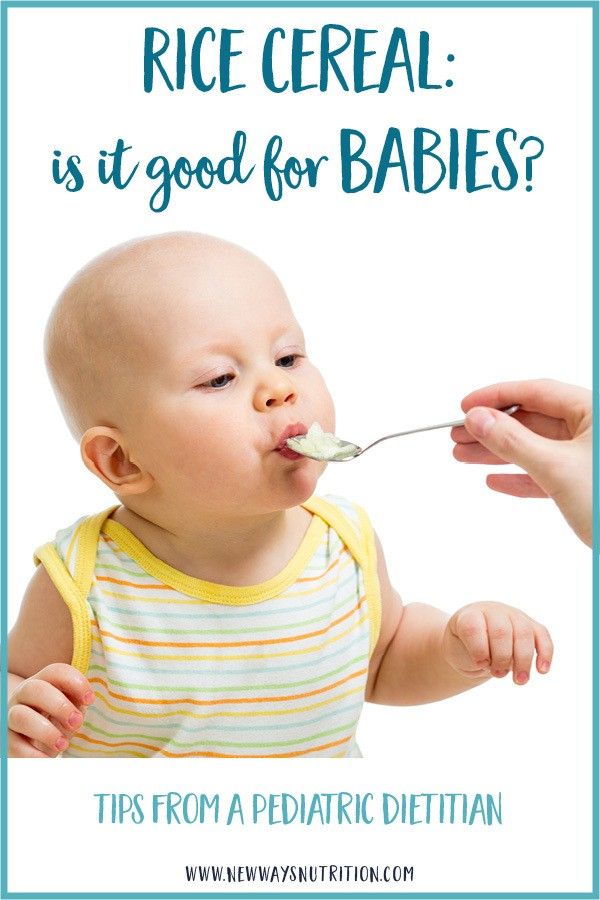
- Boil and remove the film.
- Salt.
- Let the water boil, preferably the millet remains firm.
- Boil the milk and add it to the porridge. nine0015 Cover and bring to readiness over low heat.
- 2 tbsp. l. flakes;
- 200 ml milk / water;
- spices, oil, toppings to taste.
- Bring the used milk or water to a boil.
- Reduce heat and add cereal.

- Cook the porridge for about 7 minutes, stirring constantly.
- Remove from heat, cover and let steep for 10 minutes.
- 0.5 tbsp. millet;
- 0.5 st. rice
- 1 l water;
- spices to taste. nine0016
- Mix cereals with water and bring to a boil.
- Reduce the heat to a minimum and cook for another 20-30 minutes, making sure that it does not burn.
- Add oil and spices to the finished porridge.
- consistency;
- temperature;
- bad experience;
- don't like the taste;
- feeling unwell.
- Dilute the porridge with breast milk or formula so that it becomes liquid. With a positive result, gradually reduce the amount of liquid. nine0016
- Check that the porridge offered to the child is appropriate for his age group. If the porridge is cooked on its own, then you should try to grind it even more until smooth.
- Change additives. For example, a child refuses to eat porridge with pumpkin. Offer him porridge with an apple.
- Change of scenery. If during the last feeding of the baby something was very disturbing, he was frightened, then it is worth moving the highchair to another room.

- Change porridge. Children, like adults, have the right to choose their taste preferences. If you don't like corn porridge, offer him buckwheat. nine0016
- Shift feeding time. Eating through force is not useful. If the child is not hungry, then nothing terrible will happen if you shift the meal time by 30–40 minutes.
- Benefits of rice porridge
- At what age can you give rice porridge to a child?
- Rice porridge with milk for a child
- Baby Rice Porridge Recipes
- Rinse the groats, remove the husks, unpeeled grains, foreign particles, impurities and can be boiled. If desired, before cooking, rice can be soaked in cold water overnight, or pour boiling water for a minute and rinse again.
- 1 part of cereal is poured with 1 part of water and placed on medium or slow fire.

Learn more
Millet porridge
Prostock-studio/Shutterstock.com
Whole grain millet porridge for children is prepared from 1–1.5 years old. Until this age, it is recommended to use cereals of varying degrees of grinding or grind yourself.
Since now we have a pumpkin season, and this is a very healthy vegetable that can be introduced into complementary foods for babies from 6 months old, we will consider a recipe for making porridge with it.
Ingredients :
Preparation:
When serving, add butter and dried fruits to taste.
Milk porridge for children
Prostock-studio/Shutterstock.com
One of the most common breakfast cereals is oatmeal with milk. Delicious, healthy, fast.
It can be diluted with various toppings, frozen berries, made sweet and savory, and even served as a side dish for meat.
For a child over one year old, oatmeal porridge is cooked from unground flakes. nine0003
Ingredients :
Method of preparation:
Water porridge for children
Prostock-studio/Shutterstock.com
Children's cereals can be cooked from several cereals at the same time. This is useful and expands the range of trace elements obtained. However, it should be understood that can only be mixed with cereals that the child has previously consumed.
For example, rice and millet porridge “Druzhba”.
What you need:
Cooking method:
How much porridge to give a child and when?
Prostock-studio/Shutterstock. com
com
New foods are introduced into the diet of babies from 1-2 tsp. in the morning or afternoon to observe the reaction. With a positive result, the amount of a new product increases proportionally and in a few days the volume is brought to the age norm. nine0003
| Product in g or ml. | 4-6 months | 7 months | 8 months | 9-12 months |
| Vegetable puree | 10-150 | 170 | 180 | 200 |
| Milk porridge | 10-150 | 150 | 180 | 200 |
| Fruit puree | 5-60 | 70 | 80 | 90-100 |
| Fruit juice | 5-60 | 70 | 80 | 90-100 |
| Meat puree | 5-30 | 30 | 50 | 60-70 |
| Curd | 10-40 | 40 | 40 | 50 |
Fermented milk drinks (kefir, etc. ) ) | – | – | 200 | 200 |
| Fish puree | – | – | 5-30 | 30-60 |
| Yolk | – | 1/4 pcs. | 1/2 pcs. | 1/2 pcs. |
| Biscuits | – | 3-5 | 5 | 10-15 |
| Wheat bread | – | – | 5 | 10 |
| Butter | 1-4 | 4 | 5 | 6 |
| Vegetable oil | 1-3 | 5 | 5 | 6 |
⠀
Porridge is better to give the baby for breakfast. It will provide him with energy and a feeling of satiety for the whole day. However, if the baby sleeps restlessly and often wakes up hungry at night, then evening feeding can be replaced with it.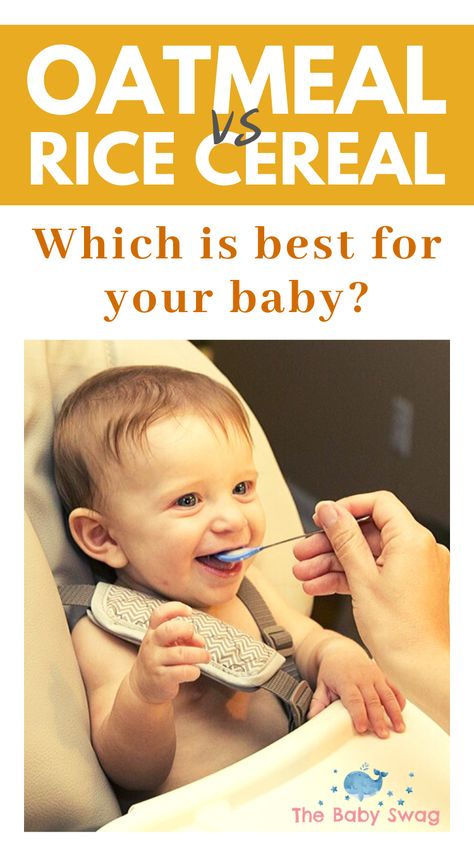 nine0003
nine0003
The child does not eat porridge - what should I do?
Prostock-studio/Shutterstock.com
If the child refuses to eat porridge, the reason should be investigated to correct the situation.
These may include:
After identifying the cause, you can correct the situation as follows:
Porridge is a versatile dish. It can be cooked with the addition of vegetables, fruits, natural sweets and even meat. It is boiled in water, milk and broth. It is difficult to overestimate the benefits of eating porridge, because it is a source of a huge amount of trace elements necessary for the life of the body. It fills with energy, has a positive effect on the health and development of children, starting from infancy. nine0003
Please rate the article
This is very important to us
Article rating: 3.9 / 5. Votes count: 8
There are no ratings yet. Rate first!
Receive a school preparation checklist to your mail
Letter sent!
Check e-mail
Rice porridge for children | Nutrilak
nine0720 01/18/2022 6863
Contents of article
Rice porridge is a dish made from milk (or water) and rice grains.
Depending on the size of the grains, there are round-grain, medium-grain and long-grain rice.
Rice grains can be processed in different ways, which determines the type of grain obtained: polished, polished, crushed. The color of rice is white, brown, black, red.
Benefits of rice porridge
Rice grains are rich in carbohydrates, they are gluten-free and low in protein. Therefore, rice is considered a dietary product and is used in nutrition for diseases such as diarrhea, celiac disease and phenylketonuria. nine0003
At what age can you give rice porridge to a child?
The best time for a baby to get acquainted with cereals is the period from 16 to 27 weeks of life. It is called the “window of tolerance”. It is during this period that the immune system forms the correct response (tolerance), the result of which will be a good tolerability of the product.
Rice porridge with milk for a child
Whole cow's or goat's milk is not recommended for use in the nutrition of children under 6 months, including for making cereals. It is better to cook cereals in water. If necessary, and when ready, you can add breast milk or infant formula, for example, Nutrilak Premium Sour Milk. nine0003
It is better to cook cereals in water. If necessary, and when ready, you can add breast milk or infant formula, for example, Nutrilak Premium Sour Milk. nine0003
Rice porridge with water is preferable for a child in the first 6 months of life. Closer to the year and beyond, you can cook porridge in milk. To facilitate cooking, rice grains can be ground to a flour state before cooking. But, it is easier to use cereals that do not require cooking, for example, 100% natural Nutrilak Premium Procereals rice milk porridge with banana.

